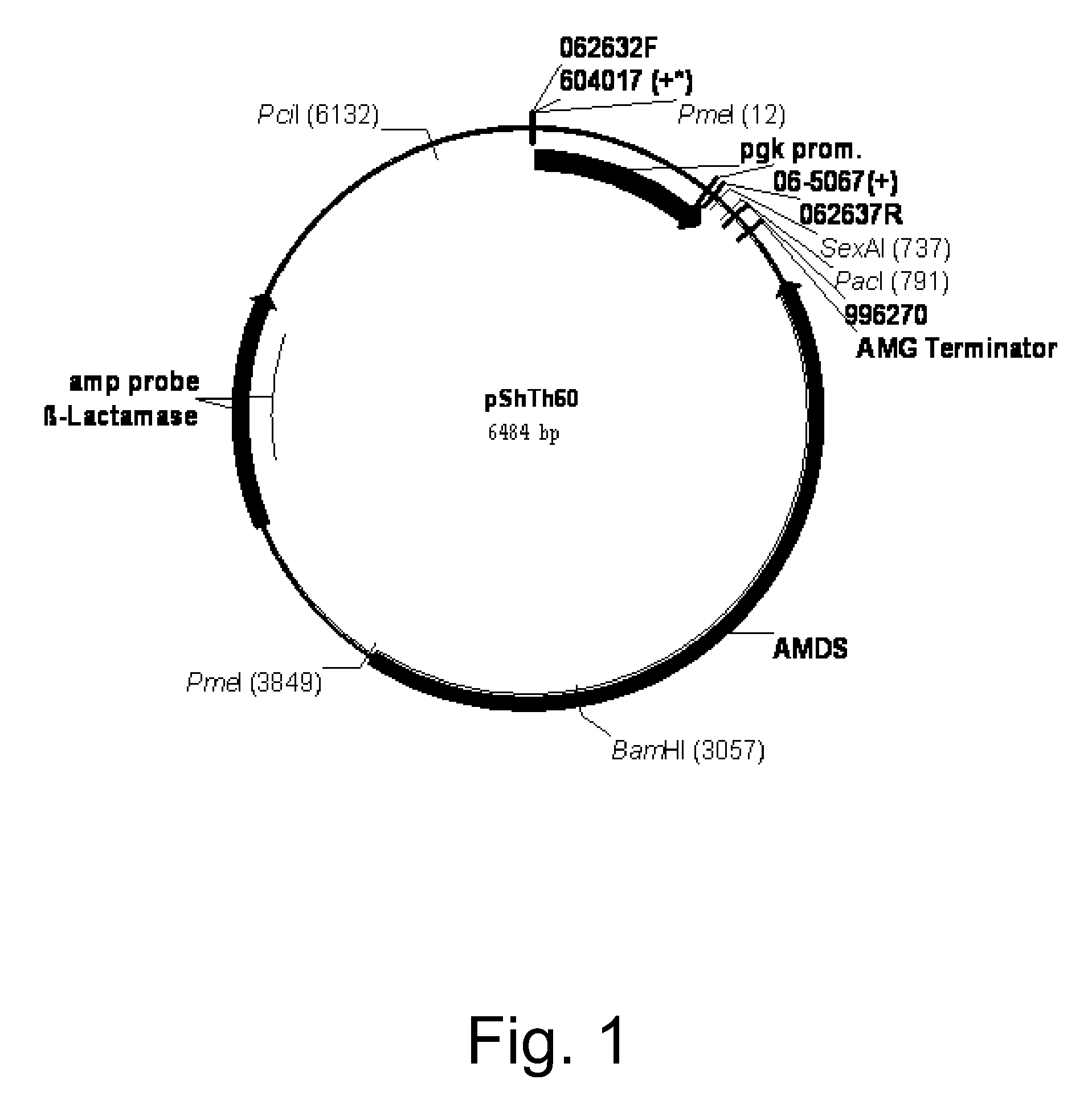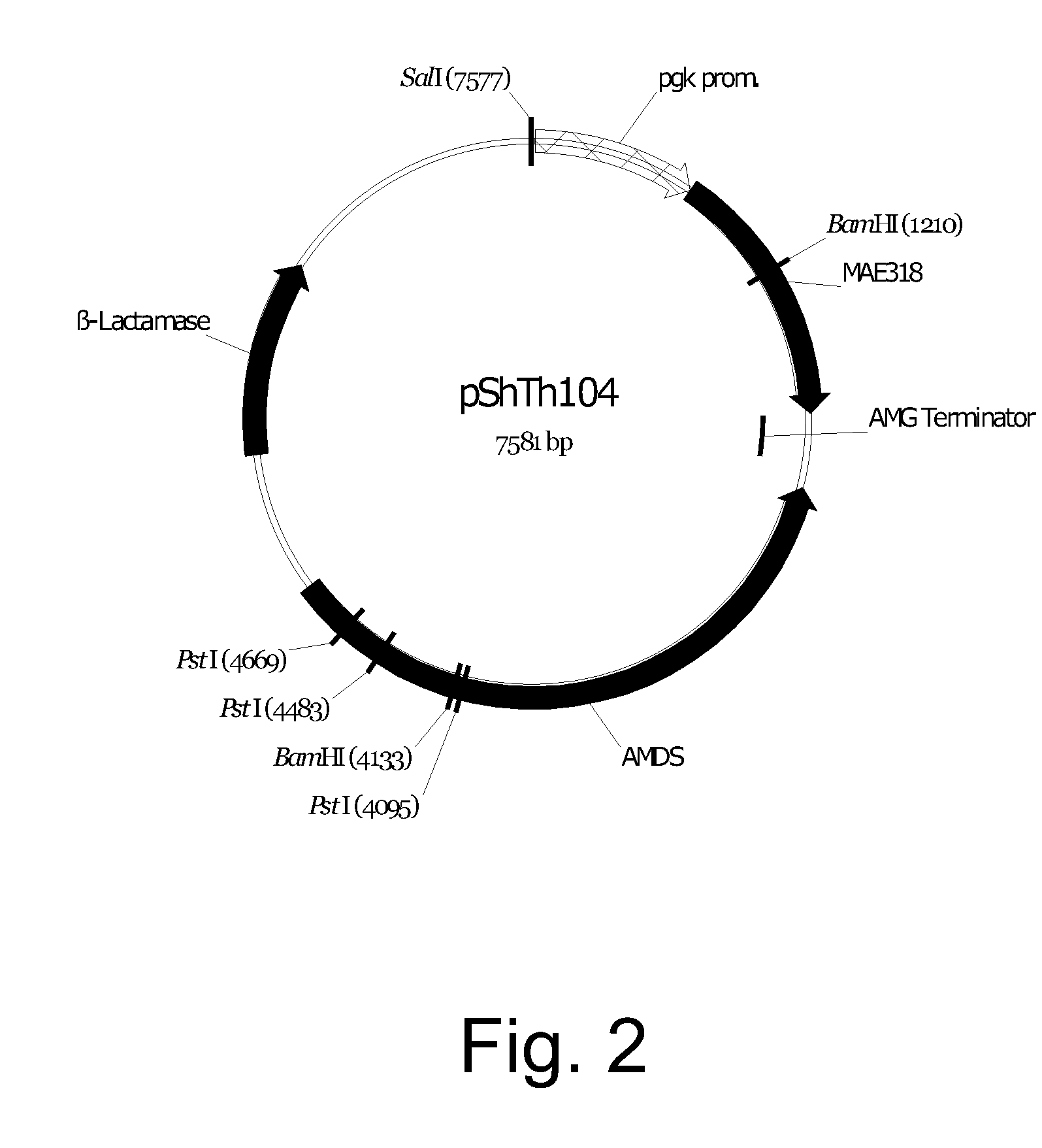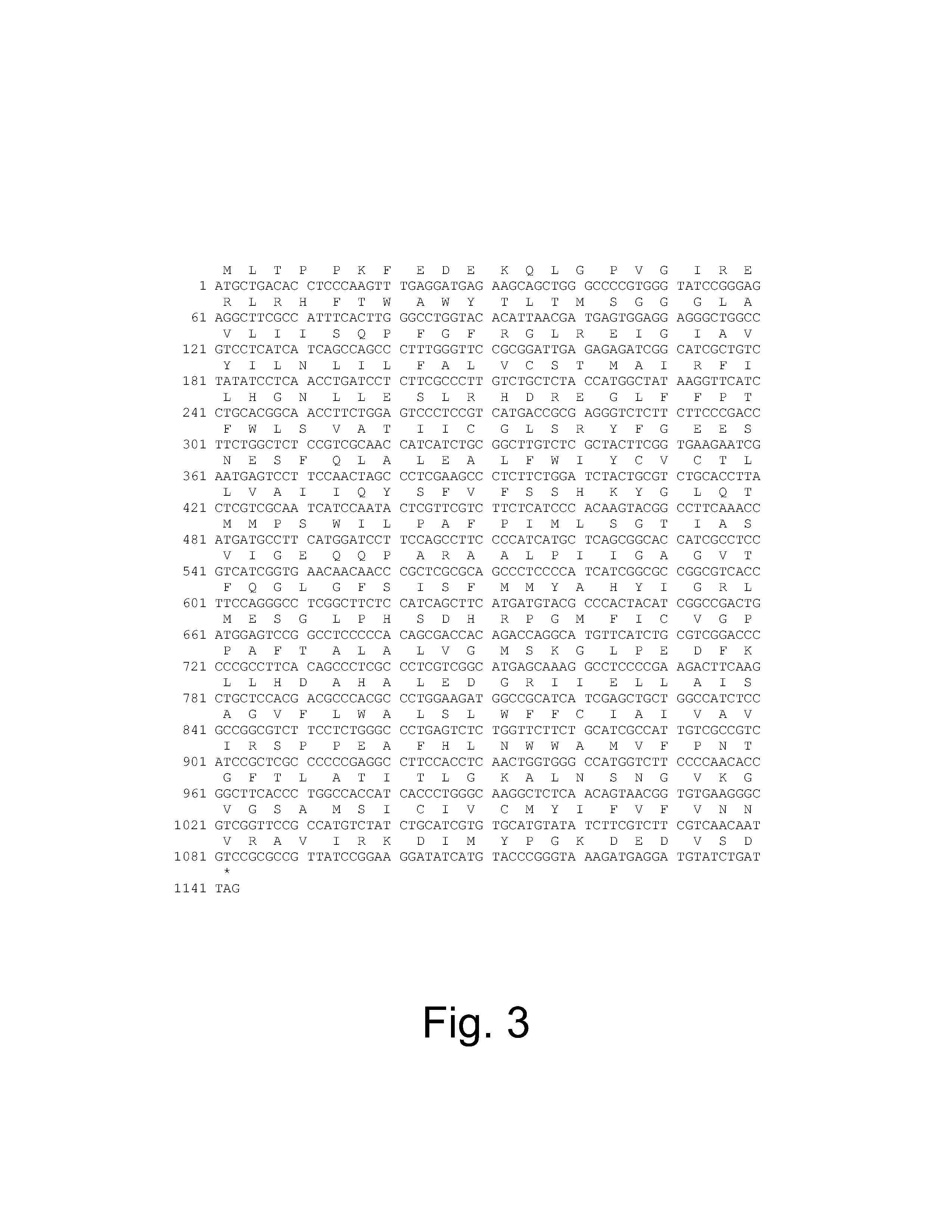Methods for improving malic acid production in filamentous fungi
a technology of c4 dicarboxylic acid and filamentous fungi, which is applied in the direction of microorganisms, biochemical apparatus and processes, peptides, etc., can solve the problems of increasing the cost of petroleum derived building block chemicals, no direct improvement of malic acid production in aspergillus, and increasing the level of malate dehydrogenase variants, etc., to achieve the effect of reducing mitochondrial import, increasing the level of malate dehydrogena
- Summary
- Abstract
- Description
- Claims
- Application Information
AI Technical Summary
Benefits of technology
Problems solved by technology
Method used
Image
Examples
example 1
Cloning of the Aspergillus oryzae NRRL 3488 C4 Dicarboxylic Acid Transporter Gene mae3 and Construction of Expression Vectors pShTh104 / mae3
[0289]The malic acid transporter gene, mae3, was cloned from Aspergillus oryzae NRRL 3488 genomic DNA by PCR amplification using primers homologous to Aspergillus oryzae ATCC 42149 predicted C4 dicarboxylic acid transporter gene model number A0090023000318 (Galagan et al., 2005, Nature 438: 1105-1115).
[0290]Genomic DNA from Aspergillus oryzae NRRL 3488 was isolated by inoculating 100 ml of YEG medium in a shake flask with 2×106 spores and incubating the flask at 37° C. overnight with shaking at 200 rpm. The mycelia were harvested by filtration using a MIRACLOTH® (Calbiochem, San Diego, Calif., USA) lined funnel and approximately 2 g of mycelia were recovered and frozen in liquid nitrogen. The mycelia were disrupted by grinding in a cold mortar and pestle. Genomic DNA was isolated from the powdered mycelia using a DNeasy® Plant Maxi Kit (QIAGEN In...
example 2
Characterization of Aspergillus oryzae NRRL 3488 mae3 C4 Dicarboxylic Acid Transporter Gene
[0294]DNA sequencing of the Aspergillus oryzae NRRL 3488 C4 dicarboxylic acid transporter gene mae3 was performed with an ABI3130XL DNA Analyzer (Applied Biosystems, Inc., Foster City, Calif., USA) using the primer walking technique with dye-terminator chemistry (Giesecke et al., 1992, J. Virol. Methods 38: 47-60).
[0295]The nucleotide sequence (SEQ ID NO: 7) and deduced amino acid sequence (SEQ ID NO: 8) of the Aspergillus oryzae NRRL 3488 C4 dicarboxylic acid transporter mae3 gene are shown in FIG. 3. The genomic coding sequence of 1143 bp (including stop codon) encodes a polypeptide of 380 amino acids with a predicted mass of 42 kDa. The gene contains no introns.
[0296]A comparative pairwise global alignment of amino acid sequences in public databases was determined using the Needleman-Wunsch algorithm (Needleman and Wunsch, 1970, J. Mol. Biol. 48: 443-453) as implemented in the Needle progra...
example 3
Transformation of pShTh104 into Aspergillus oryzae NRRL 3488
[0297]Protoplasts of Aspergillus oryzae NRRL 3488 were prepared by inoculating approximately 2×107 spores into 100 ml of YEG medium and incubating the flask at 27° C. for 16-18 hours at 140 rpm. Mycelia were collected by pouring the culture through a sterile funnel lined with MIRACLOTH® and rinsing with 50 ml of 0.7 M KCl. The washed mycelia were resuspended in a 125 ml flask containing 20 ml of protoplasting solution composed of 5 mg of GLUCANEX™ (Novozymes A / S, Bagsværd, Denmark) and 0.5 mg of chitinase (Sigma Chemical Co., St. Louis, Mo., USA) per ml of 0.7 M KCl (filter sterilized) and incubated at 34° C. for 30 minutes with mixing at 80 rpm. The protoplasting solution was poured through a sterile funnel lined with MIRACLOTH® and rinsed with 50 ml of STC buffer (1 M sorbitol-10 mM Tris-HCl pH 6.5-10 mM CaCl2). The flow-through was collected in two 50 ml polypropylene tubes, which were centrifuged at 1300×g for 10 minute...
PUM
| Property | Measurement | Unit |
|---|---|---|
| concentration | aaaaa | aaaaa |
| pH | aaaaa | aaaaa |
| pH | aaaaa | aaaaa |
Abstract
Description
Claims
Application Information
 Login to View More
Login to View More - R&D
- Intellectual Property
- Life Sciences
- Materials
- Tech Scout
- Unparalleled Data Quality
- Higher Quality Content
- 60% Fewer Hallucinations
Browse by: Latest US Patents, China's latest patents, Technical Efficacy Thesaurus, Application Domain, Technology Topic, Popular Technical Reports.
© 2025 PatSnap. All rights reserved.Legal|Privacy policy|Modern Slavery Act Transparency Statement|Sitemap|About US| Contact US: help@patsnap.com



